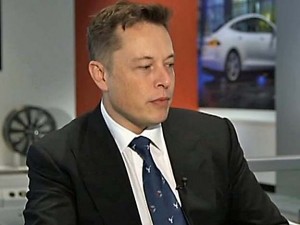
Tesla CEO Elon Musk announced the company was installing a triple underbody shield to provide additional protection for the Model S battery case.
Just as the National Highway Traffic Safety Administration said it was ending its investigation into the Tesla Model S fires, the EV maker announced it is adding a “triple underbody shield” to Model S to eliminate any possibility of the battery compartment being punctured.
The Palo Alto, Calif.-based EV maker began adding the shield, which is really a series of three shields, to vehicles manufactured after March 6 and is offering to retrofit existing vehicles upon request of the owner or when the vehicle is brought in for regular maintenance free of charge.
The new shield is in response to three vehicle fires last year that occurred after Model S drivers struck an object in the road. There were no injuries in any of the incidents, but the cars were completely destroyed. Tesla dismissed the incidents as flukes, but the fires caught the attention of officials at the National Highway Traffic Safety Administration (NHTSA).
As mentioned, NHTSA investigated the fires, but ended the query without any mandated action to improve battery pack protection, saying it found “no defect trend.” In addition to the new shield, the pack is protected by a ballistic-grade aluminum casing.
Tesla also changed the ride dynamic of the Model S with an over-the-air software update a few months ago to increase the default ground clearance of the Model S at highway speeds. Elon Musk, Tesla’s founder and CEO, announced the plan in a blog post this morning adding that the company put the shield through some harsh testing to ensure its viability.
“During the course of 152 vehicle level tests, the shields prevented any damage that could cause a fire or penetrate the existing quarter inch of ballistic grade aluminum armor plate that already protects the battery pack,” he wrote.
“We have tried every worst case debris impact we can think of, including hardened steel structures set in the ideal position for a piking event, essentially equivalent to driving a car at highway speed into a steel spear braced on the tarmac.”
While Tesla officials haven’t revealed how much the shield will cost, Musk noted that the apparatus reduced the range of the vehicle by less than .1%.
(Toyota recalling Avalons for airbag problem. For more, Click Here.)
“Wind tunnel testing shows no discernible change in drag or lift on the car,” he noted. Essentially, the shields are designed to deflect objects away from the battery pack.
(Click Here to get details on Ford’s $500 million engine plant investment.)
The first of the three shields is a rounded, hollow aluminum bar that is designed to either deflect objects entirely or, in the case of a self-stabilizing, ultra high strength object, like a three ball steel tow hitch, absorb the impact and force it to pike upwards well forward of the battery pack. This pierces the plastic aeroshield and front trunk liner, but causes no damage affecting safety and the car remains in control and driveable before, during and after the impact.
(To see how electric vehicles owners saved $100 million in 2013, Click Here.)
This is followed by a titanium plate, which has exceptional strength-to-weight properties and is more commonly seen in aerospace or military applications. The titanium plate prevents sensitive front underbody components from being damaged and aids in neutralizing the road debris.
“By this point, the vast majority of objects will have been deflected or crushed,” Musk wrote. “For the rare piece of debris that remains intact, we added a third shield, which is a shallow angle, solid aluminum extrusion that further absorbs impact energy, provides another layer of deflection and finally causes the Model S to ramp up and over the object if it is essentially incompressible and immovable.”

YES we have no problems…